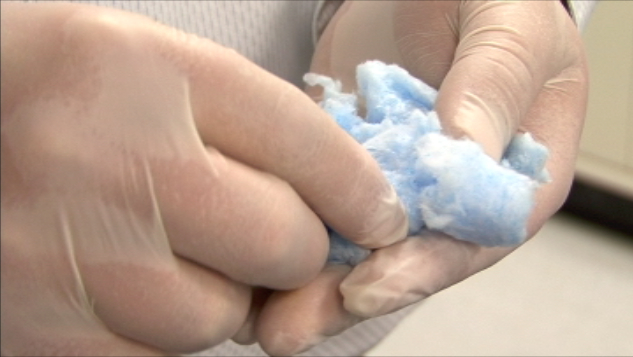
| As reported on in the just-published May issue of the Bulletin of the American Ceramic Society, the Mo-Sci Corporation recently announced its development of a novel and inexpensive wound care pad — composed of borate glass nanofibers — that helped speed the healing of venous stasis ulcers in a majority of patients enrolled in a small human clinical test group of adult diabetics.
The tests were supervised by the internal review board of the Phelps County Regional Medical Center. Each of the 13 patients in the trial suffered from hard-to-heal lower leg wounds. Some patients had wounds that had failed to heal for more than a year. Care for the patients in the study was delivered by a specialized wound-care nurse, supervised by a PCRMC physician. One patient dropped out in the early stages of the trial. Of the remaining 12, eight have had their wounds heal with little or no scarring. The wounds of the remaining four patients are nearly healed. The wound-care pads, named ‘DermaFuse’ by Mo-Sci, will soon be tested at the Center for Wound Healing and Tissue Regeneration at the University of Illinois at Chicago. In the interview, conducted in March 2011, Ted Day and Steve Jung discuss the trials and the glass fiber material used in the DermaFuse pads. Jung, along with veteran glass researcher Delbert Day (Ted’s father), developed the glass fibers while doing research at the Missouri University of Science& Technology in Rolla. |
